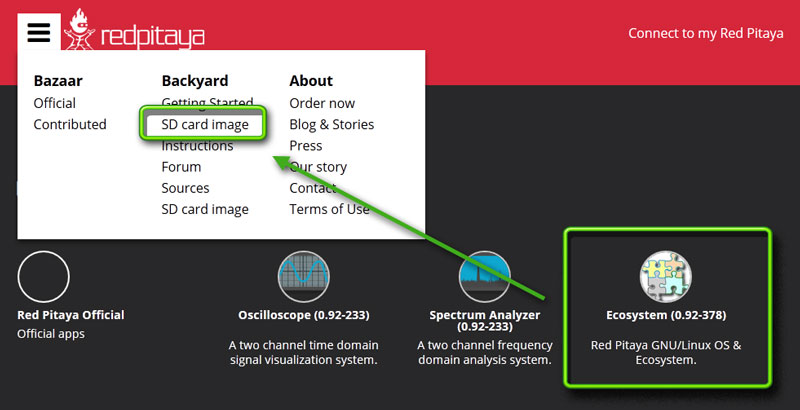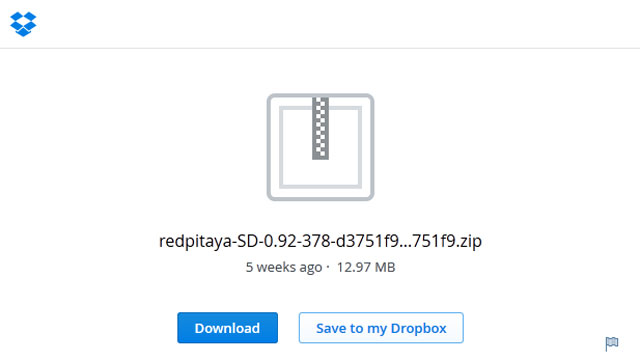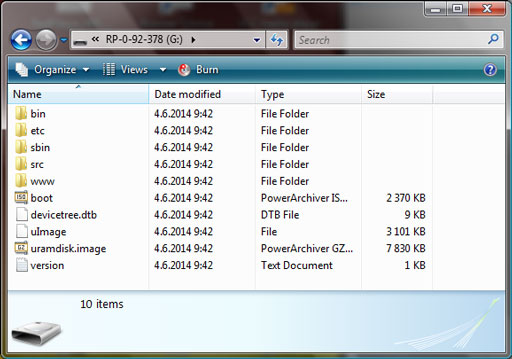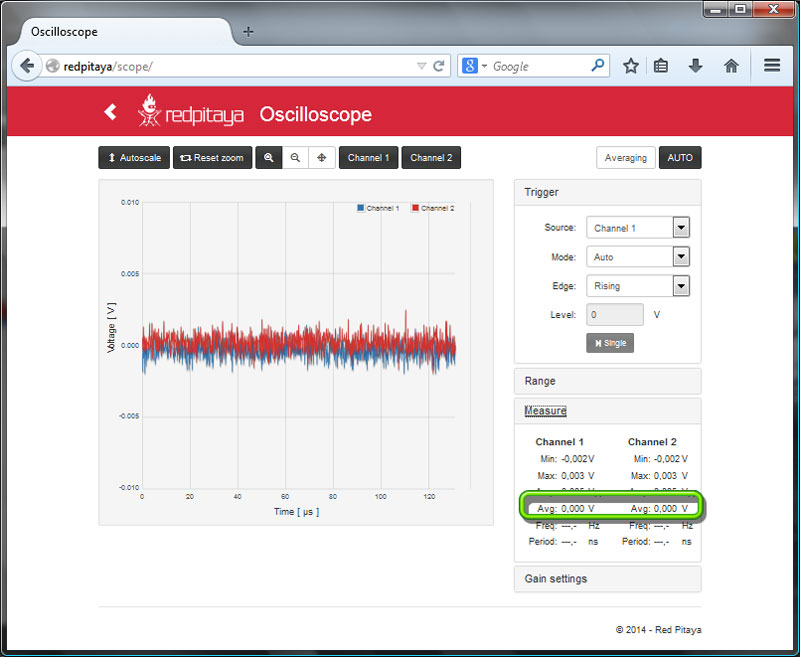Looks like there is a new SD card image available in the Red Pitaya site (thanks to Dashpi for pointing that out).
http://bazaar.redpitaya.com
The new version should have an automatic calibration included in the oscilloscope app.
The image file can be downloaded from the Red Pitaya dropbox:
https://www.dropbox.com/s/bey74ezkaua730c/redpitaya-SD-0.92-378-d3751f9-apps-0.92-233-d3751f9.zip
Let’s download the zip-archive and extract it to an empty SD-card.
Then let’s plug in the SD-card, connect the ethernet cable and the USB-power cord. And see that happens.
First, the syslog from the linux mint box tell’s me that it has allocated an IP address to redpitaya. Looks good.
dnsmasq-dhcp[1756]: DHCPDISCOVER(eth0) 00:26:32:f0:aa:bb dnsmasq-dhcp[1756]: DHCPOFFER(eth0) 192.168.1.106 00:26:32:f0:aa:bb dnsmasq-dhcp[1756]: DHCPREQUEST(eth0) 192.168.1.106 00:26:32:f0:aa:bb dnsmasq-dhcp[1756]: DHCPACK(eth0) 192.168.1.106 00:26:32:f0:aa:bb redpitaya
Now I should be able to start firefox and go to address
http://redpitaya/
Yes, seems to work fine so far.
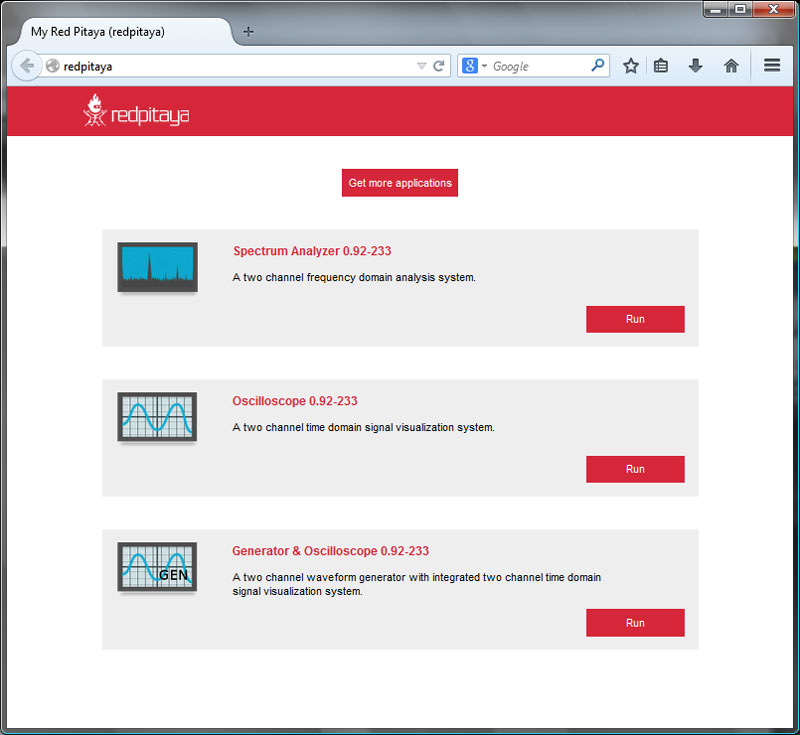
Let’s try to run the oscilloscope (50 Ohm terminators used in the input ports).
Nice. The DC-offset seems to be automatically compensated. So no need to run the calibration scripts anymore.
